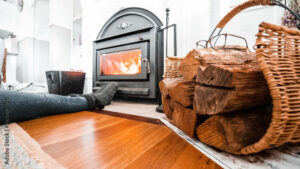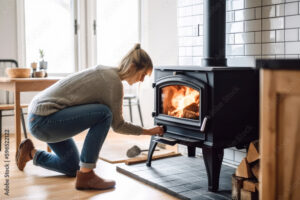Fireplaces and wood stoves have long been symbols of cozy homes. They create a warm gathering spot for families and even add aesthetic charm to living spaces. But while they can make a home feel welcoming, these heat sources are not without risk. Fireplaces and wood stoves can pose serious health and environmental concerns that every homeowner should understand.
Whether you’re a health-conscious individual, a homeowner considering your family’s safety, or an environmentalist prioritizing clean air, this guide sheds light on how fireplaces and wood stoves could be affecting your health.
For Tons of Great Free Information please hit “Like & Subscribe”
Websiteconstructionconsumeradvocacyinstitute.com
www.youtube.com/@ConstructionConsumerAdvocacy
What Makes Fireplaces and Wood Stoves a Health Concern?
The main issue with traditional fireplaces and wood-burning stoves is the release of harmful pollutants during combustion. When wood burns, it produces a mix of gases and fine particles collectively known as wood smoke, which can affect both indoor and outdoor air quality. Prolonged exposure to these pollutants can cause serious health problems over time.
Key Pollutants Released by Wood Burning
- Particulate Matter (PM2.5): These tiny particles are dangerous because they can penetrate deep into the lungs and even enter the bloodstream.
- Carbon Monoxide (CO): A colorless, odorless gas that can cause headaches, dizziness, and, in severe cases, poisoning.
- Volatile Organic Compounds (VOCs): Harmful chemicals that can irritate the eyes, throat, and lungs.
- Polycyclic Aromatic Hydrocarbons (PAHs): Carcinogenic compounds that increase cancer risk when inhaled or absorbed through the skin.
Health Risks of Using Fireplaces and Wood Stoves 
1. Respiratory Problems
One of the most immediate health risks of wood burning is respiratory irritation. The smoke can trigger symptoms in people with asthma, COPD, or allergies, but even healthy individuals may struggle after exposure to high levels of fine particles. Long-term inhalation of wood smoke has been linked to decreased lung function and chronic bronchitis.
2. Cardiovascular Impact
According to research from health organizations like the American Heart Association, exposure to PM2.5 can lead to irregular heart rhythms, heart attacks, and increased blood pressure. Those with pre-existing heart conditions are particularly at risk.
3. Indoor Air Pollution
While people focus on outdoor air quality, indoor air pollution often goes unnoticed. Poor ventilation or old chimneys allow harmful pollutants to linger in your living space, creating a hazard for every family member, including pets.
4. Higher Risk for Children and Older Adults
Young children and seniors are more vulnerable to the effects of wood smoke because of their developing or weakened immune systems. For children, exposure can lead to long-term respiratory issues, while seniors may face heightened risks of heart or lung conditions.
Environmental Concerns of Wood Burning
Aside from personal health, burning wood contributes to air pollution, exacerbating climate and environmental challenges.
- Contributes to Smog: The fine particles in wood smoke are a significant component of urban and rural smog.
- Deforestation Issues: Firewood harvesting can lead to deforestation, which impacts ecosystems and accelerates climate change.
- Carbon Footprint: While it’s often said that wood is carbon-neutral, this is only true for sustainably harvested and managed wood sources. Many wood stoves release far more carbon dioxide than people realize.
Staying Safe While Using a Fireplace or Wood Stove
If eliminating your fireplace or wood stove isn’t an option, here are ways to make it safer for your family and the environment:
1. Use Seasoned Wood
Burn only well-seasoned, dry wood, which produces less smoke and burns more cleanly. Avoid burning green wood or treated wood, which can release harmful chemicals.
2. Upgrade to EPA-Certified Stoves
Modern, EPA-certified wood stoves and inserts are designed to burn wood more efficiently, reducing emissions by up to 70%. While initially costly, they can save you money—and improve air quality—in the long run.
3. Install a Carbon Monoxide Detector
If you’re using a fireplace or wood stove, a carbon monoxide detector is non-negotiable. Make sure it’s installed in a central location and test it regularly.
4. Proper Ventilation and Maintenance
- Ensure your chimney is clean and free of blockages to allow for proper ventilation.
- Hire a professional chimney sweep at least once a year to prevent the buildup of creosote, a highly flammable byproduct of wood burning.
5. Limit Use on Poor Air Quality Days
Many local governments issue burn bans on days with poor air quality. Be sure to follow these guidelines to avoid contributing to unhealthy outdoor air.
6. Consider Alternatives
For those who want cozy warmth without the risks:
- Explore gas fireplaces or electric inserts for cleaner indoor air.
- Try pellet stoves, which are more eco-friendly as they burn compressed wood byproducts more efficiently.
Final Thoughts
While fireplaces and wood stoves bring undeniable charm and warmth to your home, the potential health and environmental risks they pose should not be overlooked. By taking steps to reduce emissions, improve ventilation, and explore alternative heating methods, you can enjoy the benefits of a cozy fire without compromising your family’s health or the air we all share.
If you’re concerned about the safety of your fireplace or want to explore eco-friendly heating alternatives, consult a professional to evaluate your setup and recommend upgrades. Your home—and your health—will thank you.
 https://www.youtube.com/watch?v=b1RLegSnqLw
https://www.youtube.com/watch?v=b1RLegSnqLw




